JetBlue Aims to Diversify the Aviation Industry Through STEM Partnerships
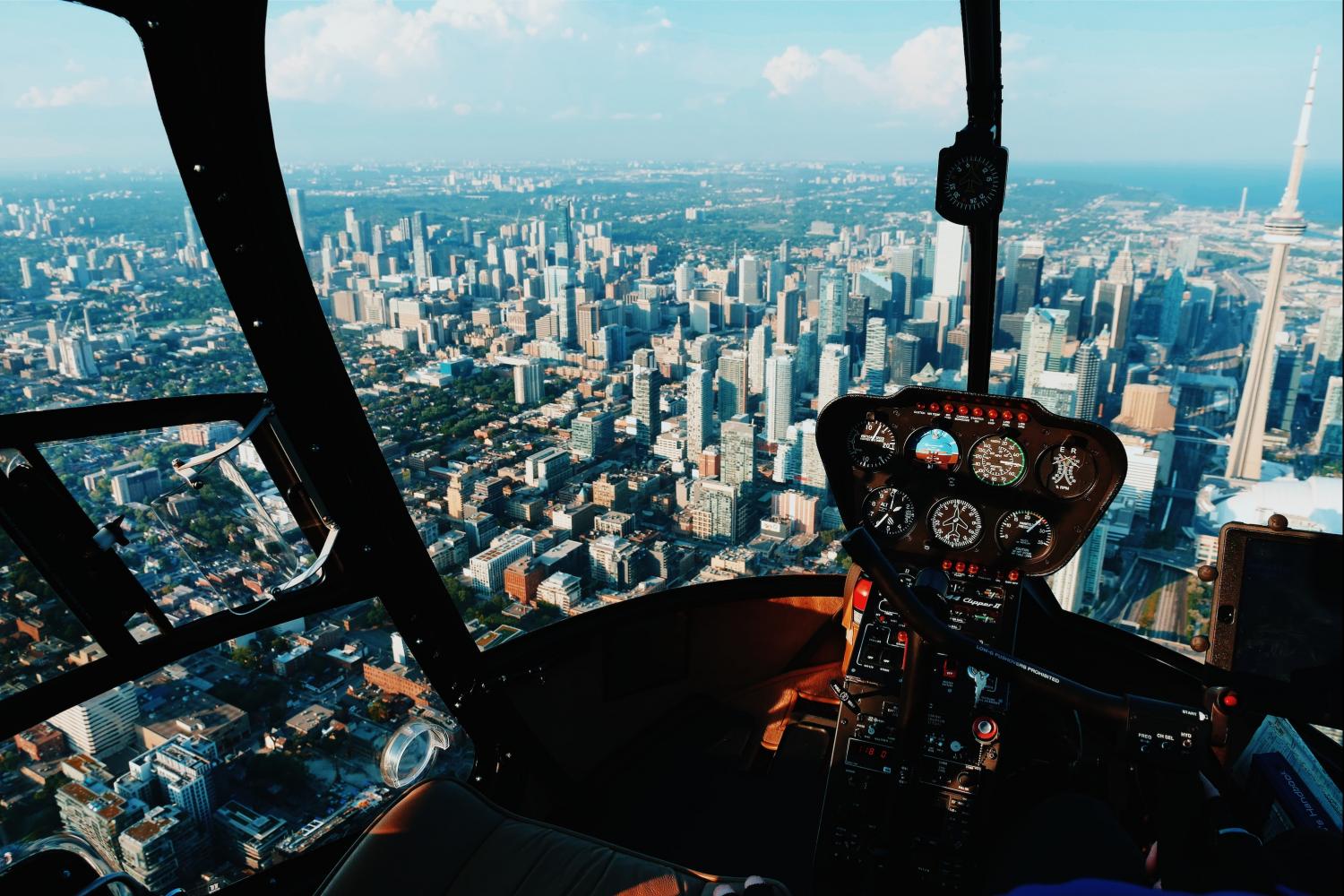

The Tuskegee Airmen flew more than 700 bomber escort missions during World War II. They were the first group of African-American aviators in the U.S. Army Air Corps, now the U.S. Air Force, as well as the only fighter group in the entire war to have a perfect record protecting bombers. But when they returned home, many couldn’t get a job in the airline industry.
You can hear the amazement in Randall Rochon’s voice when he relayed this story during a recent interview with TriplePundit. But what Rochon, a first officer for United Airlines, says next is even more surprising: Today, nearly 80 years after the end of WWII, African-Americans make up less than 3 percent of all airline pilots. For African-American women, the figure barely reaches 1 percent.
The issue of minority underrepresentation in the airline industry “is still very relevant,” Rochon told us. “We have to ensure that minorities—especially those in vulnerable communities who have maybe never even been on an airplane—understand they can have a career in aerospace. We have to give them a pathway.”
Building a diverse pipeline of talent
Major airlines increasingly agree with Rochon’s sentiment. JetBlue and the JetBlue Foundation, for example, say they’re leading the charge to build a more diverse talent pipeline for the aviation industry, in partnership with groups like the Organization of Black Aerospace Professionals (OBAP).
Founded in 1976, OBAP is a nonprofit organization dedicated to the encouragement and advancement of minorities in aviation and aerospace careers. With more than 3,000 members internationally, representing every major and regional airline carrier, OBAP supports aspiring aviation professionals through mentoring, scholarships, training and youth-focused education programs.
Rochon himself got his start through the organization. “I was sitting in my kitchen the year before college and was flipping through some of my mother’s magazines when I came across an ad in Ebony about OBAP,” he recalled. “I didn’t know much about them, so I gave them a call to see what they were about. I left a voicemail and really didn’t think I would hear back.”
But he did. The next day, the OBAP president gave him a call, and a few weeks later, Rochon found himself thousands of miles away at Western Michigan University in a two-week summer flight program for high-school students. Soon after the program ended, the university offered him a full scholarship to its College of Aviation.
Since then, Rochon has been an active OBAP member, today serving as the vice chair of its board of directors. “OBAP offered me opportunities to meet and network with professionals in the industry, it opened up possibilities, and it led to many friendships,” he told us.
Providing hands-on training
The two-week program that Rochon joined in the summer before college was one of OBAP’s early Aerospace Career Education (ACE) Academies.
Endorsed by the Federal Aviation Administration (FAA), ACE Academies aim to introduce, educate and guide middle- and high-school students toward careers in aviation. The first academy in 1992 hosted 41 students. Today, more than 1,000 students participate every summer at one of more than 26 locations across the U.S., including academies in Puerto Rico and the U.S. Virgin Islands.
In total, more than 30,000 students have gone through the ACE program, learning about the history of aviation, fundamentals of aerodynamics, air traffic control procedures and aerospace technologies.
But it is corporate partnerships that bring the academies to life and make them more than academic experiences.
Case in point: Students participating in the New York academy this summer got a behind-the-scenes tour of JetBlue’s terminal and maintenance hangar at John F. Kennedy airport. They also had a chance to experience and fly in the airline’s E-190 simulators, visit the control tower, and receive hands-on flight training with a certified FAA flight instructor.
The JetBlue Foundation and OBAP hosted seven ACE Academy programs last summer in Boston; Fort Lauderdale, Florida; Los Angeles and Long Beach; New York; Orlando; San Juan, Puerto Rico; and St. Thomas in the U.S. Virgin Islands. Many previous ACE alumni have gone on to land coveted internships with JetBlue and other corporate partners, some of which led to full-time careers.
“JetBlue brings more than financial support to OBAP,” Rochon said. “They bring promise and hope and opportunity. Kids who go through these programs and meet with professionals go back home and talk to mom and dad, saying ‘Hey, I know what I want to do with my life.”
Investing in long-term sustainability in aviation
There is another reason—closer to home—that investing in organizations such as OBAP is essential for JetBlue and other airlines: the industry is facing a severe shortage of pilots.
According to the FAA, there were about 827,000 pilots in U.S. in 1987. But during the past three decades, the number of has decreased by 30 percent while demand for air travel has skyrocketed. In fact, the International Air Transport Association predicts that air travel will double over the next 20 years.
What’s more, a 2016 report by Boeing shows that 42 percent of the pilots currently flying for major U.S. airlines will reach their mandatory retirement age of 65 within the next 10 years.
JetBlue and its company sponsored Foundation is prepared, stating on its website: “We know that the industry can’t rely on the traditional ‘talent pipelines’ to fill our future positions; we need to be innovative to fire up passion for aviation among the next generation.”
Whatever the reason, for Rochon, the importance of the partnership is simple. “It’s to say to kids, ‘You can do it … [a career in aviation] can be done.’”
This article series is sponsored by JetBlue and produced by the TriplePundit editorial team.
Image credit: Patrick Tomasso/Unsplash
Inclusive Hiring Benefits All: The Story of Spectrum Designs
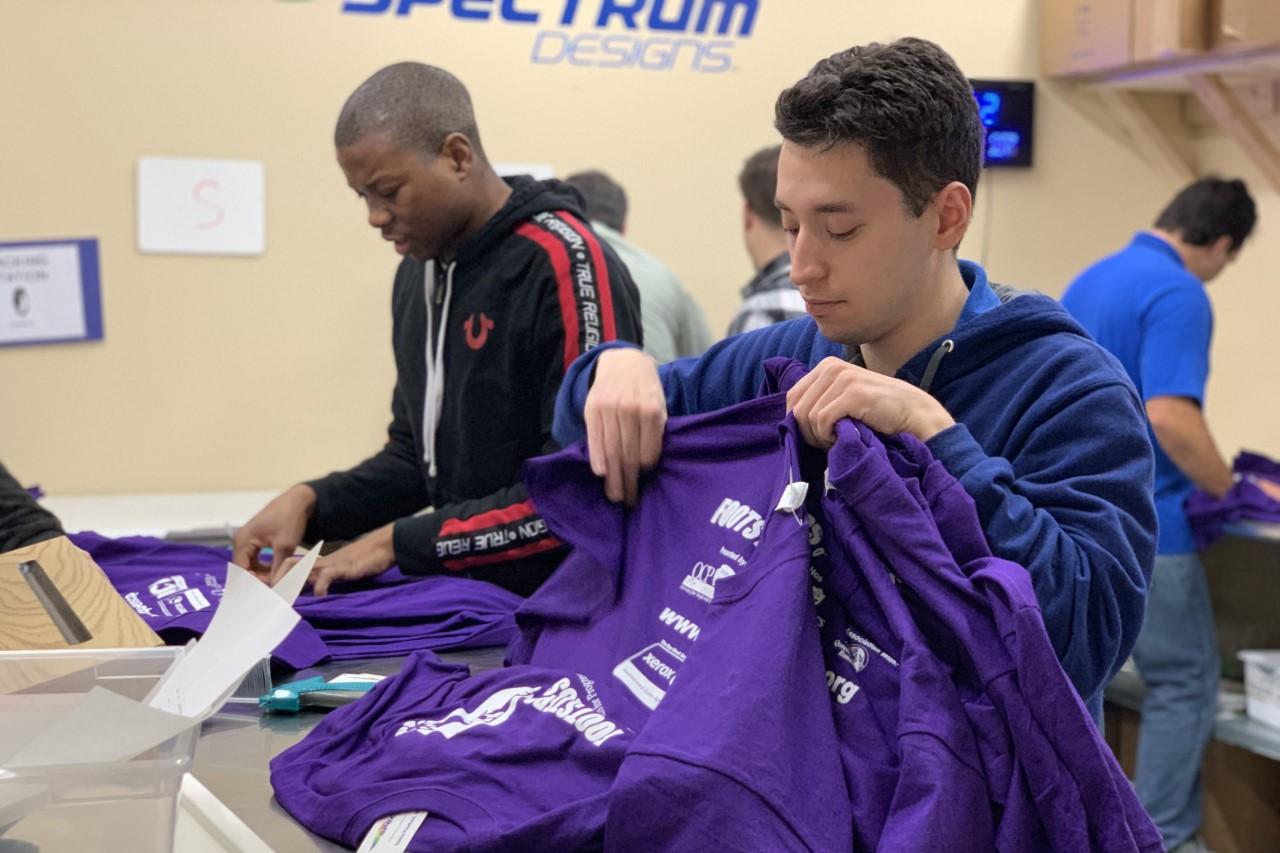
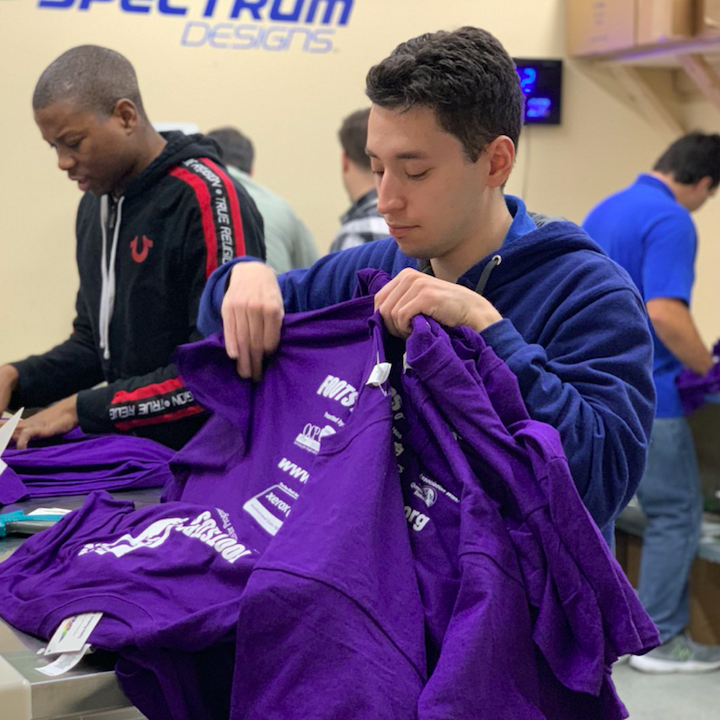
T-shirts are a common way to share publicly what matters to you – whether it’s a local coffee shop logo, your alma mater, or a charity road race you ran. The shirts and other apparel printed at Spectrum Designs carry another message: They support inclusive hiring and economic opportunities for the autistic community in Long Island and across the country.
The backstory of Spectrum Designs
Spectrum Designs Foundation began in 2011 as the employment initiative of The Nicholas Center for Autism. Cofounders Stella Spanakos, Nicole Sugrue and Patrick Bardsley wanted Spectrum Designs to create a social enterprise that offered meaningful employment and training opportunities for individuals with autism as they “aged out” of school-based services (usually around age 22, depending on the state). Spanakos and Sugrue are both parents of children on the autism spectrum.
“Individuals with autism don’t have as many opportunities to explore as they get older, to grow and thrive. We must change that,” Spanakos said in a 2018 interview with Forbes.
Today, Spectrum Designs Foundation also includes two additional enterprises: Spectrum Suds, a laundry service, and Spectrum Bakes, a bakery specializing in granola bars. Together, Spectrum has a combined total of 42 employees, more than half of whom are on the autism spectrum. Clients range from Google to Benjamin Moore to Mothers Against Drunk Driving (MADD).
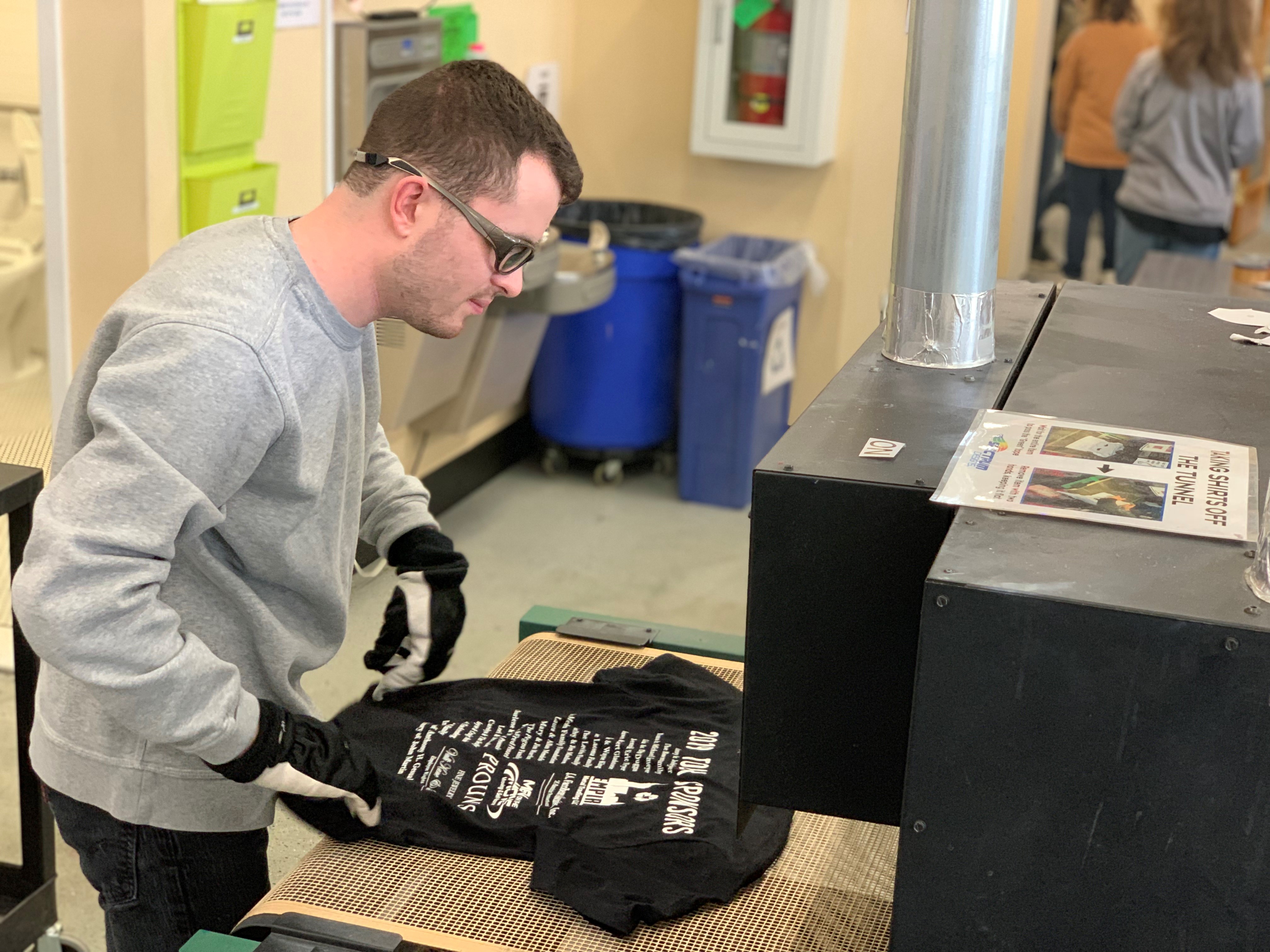
Photo: Employees at Spectrum Designs are paid at or above minimum wage, going above and beyond U.S. and state employment laws.
“We are knee-deep in client orders from all over the U.S. and beyond, having moved over a year ago into a new 7,500 square foot production facility [in Port Washington, N.Y.], which tripled our production capabilities and hiring options,” said Bardsley, who now serves as CEO of Spectrum Designs Foundation, during an interview with TriplePundit. “We are in the process of creating Spectrum Designs II in Westchester, N.Y., by the end of 2019, which we hope will create at minimum 10-plus jobs in the first year of operation.”
Bardsley said that from the beginning, Spectrum set out to create a fully inclusive environment where each employee knows his or her needs are being addressed. Employee benefits include wellness initiatives specifically designed for a neurodiverse community. And unlike many organizations, Spectrum compensates all employees at or above minimum wage. (Currently, most U.S. states allow employers to pay disabled workers below minimum wage.)
“We are well aware that disabled individuals face challenges not only with obtaining and keeping jobs, but being compensated in a fair and just manner,” Bardsley said. “Fair pay for fair work was fundamental as we set about putting our business model into place.”
“Part of the group”
Spectrum Designs’ Lead Production Assistant Josh Mirsky said that for him, inclusion means “being part of the group, not an outsider.”
“I have so many stories of being not included. That’s pretty much my entire childhood and … up until Spectrum,” Mirsky said in Episode 19 of his podcast Sounds Like Autism. The episode was specifically focused on inclusion in the workplace.
Mirsky produces and hosts the weekly podcast with Spectrum Designs’ Workforce Development Director, Dave Thomson. The duo recently completed a TEDx Talk. Additionally, Mirsky has joined Bardsley in presentations at several organizations in the greater NYC area.
“[Josh Mirsky] has gained confidence and independence, … finding a niche speaking to businesses and universities about his experiences at work, where he is understood, encouraged and invited to grow and be himself,” said Lee Anne Vetrone, Development Manager at Spectrum Designs Foundation.
The economic argument for inclusive hiring
Many employers are starting to recognize the financial and economic benefits of inclusive hiring. But while there are great strides being made, the reality is that people autism face very real barriers to finding employment.
The Autism Self-Advocacy Network (ASAN) offers many suggestions on how to expand employment opportunities for the autistic community. Solutions include improved public transportation options, equal employment opportunity enforcement and awareness, and transition assistance programs providing job coaching and training. While initiatives such as these may cost more up front, they will more than pay for themselves in the long run, as employees earn money to spend in the community, and pay taxes to state and federal governments.
As Bardsley wrote in a 2018 article for the Long Island Business News:
“Helping people with autism secure paid employment is not just a social initiative, but an economic one. You are simultaneously diminishing dependency and fostering contribution when you step away from the traditional way that people view social causes as a hand out and instead are offering a hand up.”
And as long as organizations like Spectrum Designs Foundation continue providing a hand up to members of the autistic community, people like Josh Mirsky will continue to contribute to both the economy and the ongoing conversation about the importance of inclusion.
(Author’s note: There is much debate regarding the language used to identify and describe someone with autism. This article uses person-first language to stay consistent with Spectrum Designs Foundation’s and Sounds Like Autism’s terminology. For more information regarding person-first versus identity-first language, please visit ASAN or the National Center on Disability and Journalism.)
Don’t forget: Next week, we’ll be hosting 3BL Forum: Brands Taking Stands – What's Next, October 29-30, at MGM National Harbor, just outside Washington, D.C. We’re proud to have Spectrum Designs as a sponsor; for those attending the Forum, please stop by and visit them at the event’s Marketplace.
Image credits: Spectrum Designs
Bio-based Plastics Hit the Big Time, Going Beyond Product Packaging
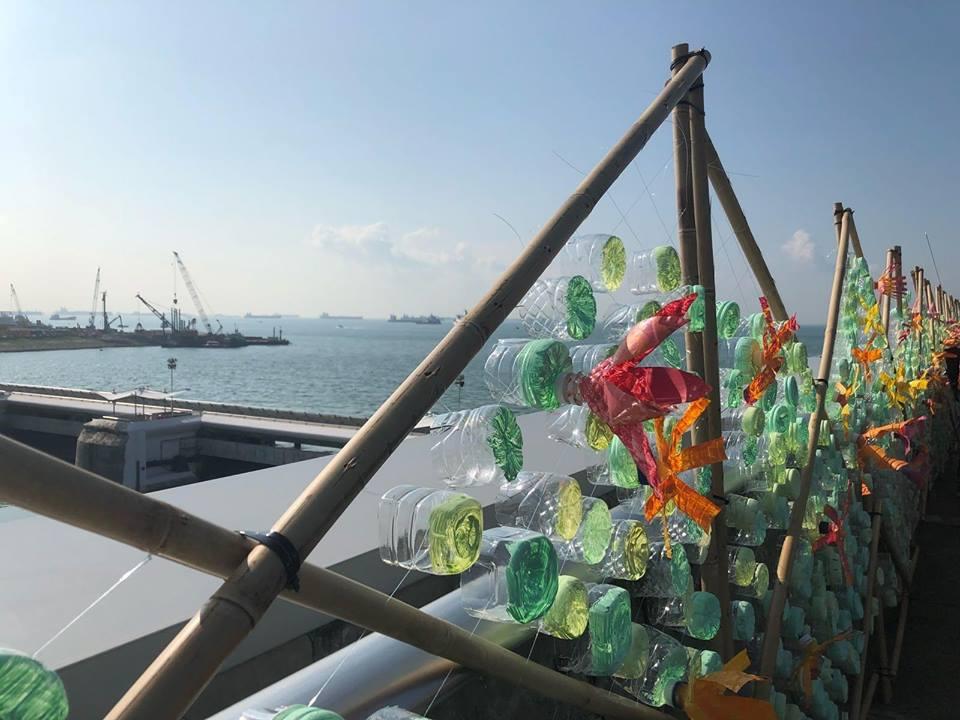
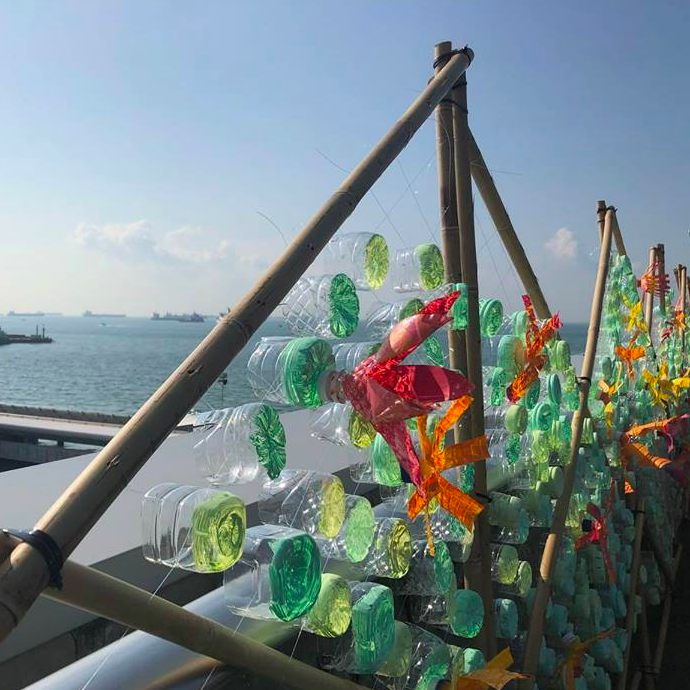
Earlier this month, many of us were duly impressed with Unilever’s pledge to halve its use of virgin plastic by 2025. The announcement followed Procter & Gamble’s September pledge to increase the post-consumer recycled (PCR) content in its liquid detergent bottles to 50 percent and reach up to 100 percent PCR content in its conditioner bottles. In addition, Nestle’s commitment to make 100 percent of its packaging recyclable or reusable by 2025 is another step forward in taking on the global plastics crisis.
These pledges—assuming they are carried through—are all positive steps in addressing the dire plastic waste problem facing the world. But most commitments to date have focused on plastic used in packaging, which is just the tip of the plastic iceberg, so to speak.
A broad bio-based plastics commitment
That’s why it was exciting to hear from Dutch multinational DSM recently that it will introduce bio- and recycled-based alternatives for its entire engineering plastics portfolio by 2030. This is one of the first times a manufacturer of industrial-grade plastics, which have broad applications across industries from automotive to energy, has made such a commitment.
DSM made the announcement at the huge plastics trade conference known as the K-Show happening this week in Germany, saying the move was in part to address the growing consumer and legislative demand for sustainable living practices and more circular products.
As detailed in the announcement, DSM will offer a full portfolio of sustainable alternatives that contain at least 25 percent recycled and/or bio-based content by weight in the final product. The company has leveraged various technologies and approaches to create the new portfolio, such as fermentation, mechanical recycling and mass balance accounting of bio-based and chemically recycled feedstock.
To demonstrate its commitment, DSM announced at the trade show the launch of bio-based grades of two of its products: Arnitel, mainly used to replace rubber in automotive and electronic products, and Stanyl, used in products that require durability at high temperatures such as kitchen spatulas, car transmissions and desktop computers.
Eastman also using innovation to reduce plastic waste
Another company working to transform industrial grade plastic is Tennessee-based specialty materials company Eastman. Earlier this year, the company announced plans to leverage a new innovative process known as carbon renewal technology to reduce plastic waste destined for landfills.
The company says the technology can recycle some of the most complex plastic waste, including non-polyester plastics and mixed plastics, that cannot be recycled with conventional recycling technologies.
Here is how it works: Carbon renewal technology uses plastic waste as an input — or feedstock — and converts it back to simple and versatile molecular components. The process partially oxidizes the plastic and, at a very high efficiency, converts it into the basic building blocks of certain Eastman products, including products that ultimately are used in such diverse sectors as ophthalmics, durables, packaging and textiles.
The company is also using a second advanced circular recycling technology, albeit one that has been around longer than carbon renewal technology: methanolysis. The process uses polyester waste that cannot be recycled by current mechanical methods. Methanolysis then breaks down polyester-based products into their basic building blocks, which can then be used to produce new polyester-based polymers.
According to its website, Eastman is currently executing an engineering feasibility study on the design and construction of a commercial scale methanolysis facility with the goal of full-scale operations within 24 to 36 months.
“Plastics are used in so many important ways. But because some don’t have good end-of-life solutions or are discarded, the world is facing a problem of significant magnitude,” said Mark Costa, Eastman CEO and board chair, adding that Eastman is working to “contribute in a meaningful way to a circular economy – an economy where we reuse and repurpose our resources, so they retain their value for as long as possible.”
Plastic is not for everyone
Not everyone is inspired by the recent plastic pledges and announcements, however.
The founders of the wildly popular sustainable footwear company Allbirds, Tim Brown and Joey Zwillinger, recently told Fortune that “Recycling plastic is a decent solution, but based on fundamentally backward logic. We shouldn’t glamorize recycling because it finds new uses for a bad material. Instead, we need to stop using the bad material in the first place.”
Others take a more pragmatic approach, pointing out, for example, that plastic has a lower carbon footprint than many alternative materials when it comes to shipping and distribution.
For companies that are not planning to completely walk away from plastic, the goal must be to ensure that it does not end up in landfills or rivers or oceans, but rather is reused, recycled or composted.
The announcement this week by DSM is a step in the right direction.
Image credit: DSM/Facebook
The Limits of Employee Activism: Google Steps Back into Immigration Mess with New Hire
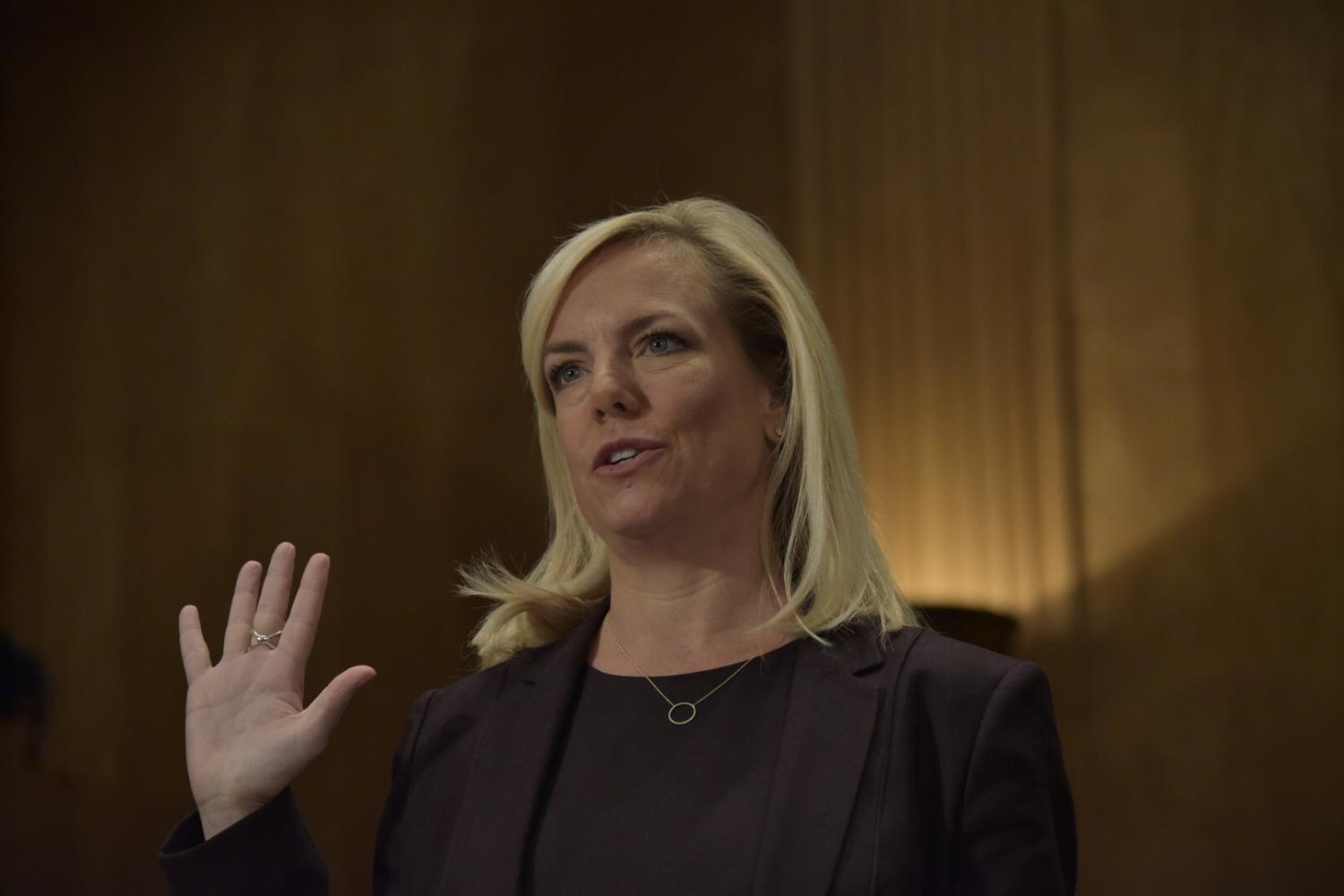
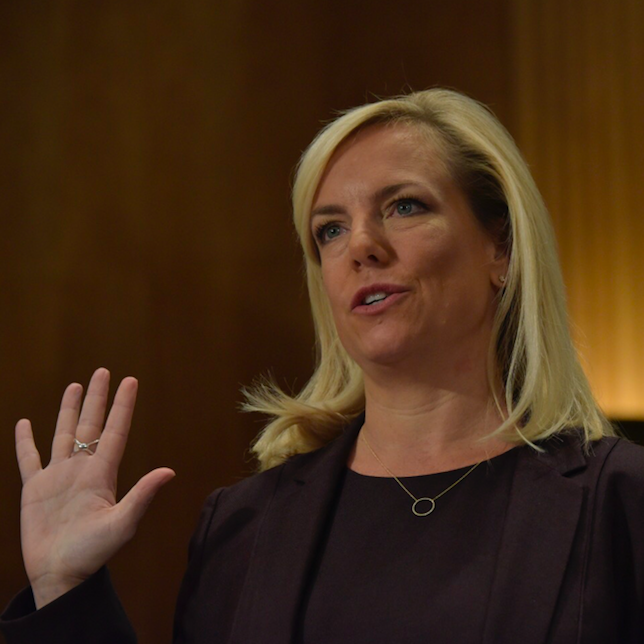
As part of the growing employee activism trend, some workers at Google have been lobbying their company to stop doing business that supports the Donald Trump administration's immigration policies. Google’s response demonstrates just how far the employee activism movement has to go before it becomes truly effective.
Employers rise to the challenge…
Within days of taking office, President Trump issued a “travel ban” and other executive orders that challenged leading U.S. companies, especially in the tech sector, to defend the rights of immigrants and visiting workers.
The orders had a direct impact on approximately 200 Google employees. Within a week, Google and almost 100 other leading tech companies publicly protested the orders. They also took the rare step of coordinating legal action aimed at protecting their ability to “recruit, hire, and retain some of the world’s best employees” and to “attract talent, business, and investment to the United States.”
…and employees take up the torch
The president’s initial immigration orders mainly affected people with citizenship in and around the Middle East, a region that has recently provided the tech sector with a rich pool of international talent. In other words, the president’s orders instigated several bottom-line concerns.
Apparently, those concerns are not so much in play when the policies in question deal with persons from Central and South America traveling over the southern border to the United States.
Although some leading tech companies voiced objection to the administration’s southern border policies, a number of other leading tech firms—including Amazon, Microsoft, IBM and Oracle, along with Google—have continued their business relationships with immigration agencies like U.S. Customs and Border Patrol (CBP) and U.S. Immigration and Customs Enforcement (ICE).
Last June, workers at the home furnishings company Wayfair set the bar for employees who seek to protest corporate relationships with federal agencies that enforce immigration policy at the border with Mexico, but so far workers at other companies have not responded in kind.
…but tech employees need to get foxier about guarding the henhouse
Google employees have had some success in shaping company policy in recent years, with policies related to the use of its artificial intelligence (AI) technology as just one example. However, events of the past few months reveal that Google workers need to keep an eye on the company’s hiring practices as well.
As recently as last August, hundreds of workers at Google publicly pledged not work on business related to U.S. federal immigration and border control agencies that enforce policies on the southern border.
They also demanded that Google “withdraw any existing and potential infrastructure, funding or engineering resources" for CBP or ICE, CNBC reported.
The hiring of a former DHS official fans the flame of discontent
Meanwhile, though, Google was hiring from within the ranks of the very agency that its employees protested.
In a long-form exclusive earlier this week, Buzzfeed News reported that Google has hired former Department of Homeland Security staffer Miles Taylor as a “government affairs and public policy manager.”
At DHS, Taylor publicly defended the Trump administration's immigration policies while moving up the ranks. He eventually became the chief of staff for DHS Director Kirstjen Nielsen (shown above).
Google’s decision to hire Taylor in a public-facing position is quite a turnaround for a company that once vigorously protested the administration’s policies on immigration.
When saying no is not enough
The new hire is consistent with the company’s apparent aim of improving its outreach to “governments and other stakeholders” as it faces a slew of investigations, Buzzfeed reported. However, while Taylor is no longer at DHS, he still carries the weight of his association with the agency.
That weight increased earlier this week, as former Secretary Nielsen (she left the agency last April) came into the public eye again. Nielsen was a featured speaker at Fortune’s Most Powerful Women summit earlier this week, prompting other high-profile invitees—including former Secretary of State Hillary Clinton and singer-songwriter Brandi Carlile—to bow out.
At the summit, Nielsen defended her actions at DHS and described herself as someone who “spoke truth to power from the very beginning.”
Be that as it may, contradictory evidence regarding Nielsen’s various public statements on the administration's family separation policy does not appear to support that characterization. If the former DHS chief intended her appearance the Fortune event to be part of a rehabilitation tour, the effort appears to have fallen short, and Taylor has been caught in the backlash.
So far, Google appears to be taking a wait-and-see position regarding the Taylor hiring. Regardless, Google employees may be justified in adding it to their list of immigration-related grievances against the company.
And, they may take Nielsen’s words to heart. At the summit, Nielsen claimed that she left DHS because "saying no and refusing it to do it myself was not going to be enough.”
That statement may not be a particularly accurate representation of Nielsen’s tenure at DHS, but it does bear on the sentiments of activist employees at Google, and other companies, who are seeking a bigger seat at the corporate policy table.
Image credit: U.S. Department of Homeland Security/Flickr
This Outdoor Outfitter is Doing More Than Opting to Take on Climate Change


REI has long been an outlier in the retail sector. While many retail chains are shuttering locations, the Seattle-based outfitter keeps opening new stores. And for the fifth consecutive year, as more retailers are determined to turn Black Friday into Black Thanksgiving Weekend, REI will once again shut down all of its locations.
And REI isn’t just closing stores. If you happen to order something online the day after Thanksgiving, your order won’t be processed that day. Furthermore, the company is asking its 13,000 employees to venture outdoors – as well as making the same ask of its 18 million members, who together make the 81-year-old company America’s foremost retail co-op.
This year, the company is asking employees and members to ratchet it up a few notches – and we’re talking massive notches.
If you’re a dedicated Instagrammer and are an outdoors fiend, you’ve probably seen the #OptOutside hashtag here and there – especially on and around Black Friday. Well, that’s REI’s social media brainchild, and yes, once again, next month’s Friday holiday will be all about #OptOutside.
Opting big time to take on climate change
Only this year, REI is urging people to “opt to act.” The company is asking for a nationwide clean-up effort, with the goal to leave the outdoors better off than when people arrive at their favorite national or state park, or any outdoors space for that matter. According to the company, employees have already been opting to act when it comes to clean-up, collecting over 3.4 tons of garbage as of press time.
This effort is all part of what REI says is a “fight for life outdoors” – whether its revamping its linear business model to a more circular one in which returned and used items are bought and sold; taking on waste; and eliminating unnecessary packaging used to store and ship its products.
Climate change is a threat to REI’s business
True, climate change is a long-term risk to all industries – but it poses a huge threat to REI, which banks on selling apparel and gear designed for folks who choose to spend the bulk of their free time in the great outdoors.
Climate change is also a threat to REI’s travel business – which so far features dozens of adventure travel itineraries worldwide, including one of its most recent trips, a hiking and camping escape to the Pinnacles National Park in central California’s coastal ranges (shown above).

Photo above: REI guides prepare a lunch spread in the middle of Pinnacles National Park
REI’s challenge, and that of its competitors, is not all that different from the sports industry or the global food and beverage sector. Aggressive climate adaptation won’t help the sport of hockey if there’s no ice to play on; most farmers don’t have the option to pack up and move their fields north if where they live becomes too hot and arid; and in the case of REI, it will lose a lot of business if snow-capped peaks lose all that ice and snowpack forever.
Small changes add up to lasting impact
The challenges seem daunting, but if any company and its stakeholders can inspire change, it’s REI. The co-op’s ambitious sustainability commitments are a start, but as any REI employee will tell you, little changes we all make can together generate a huge difference. Yes, there’s long been the argument that companies and governments need to move faster to scale up change, but as plenty of evidence suggests, if everyone makes small changes to their everyday routine, the results can be huge.
“As a single company, our impact is limited, but as a community, we can drive change that powers meaningful action beyond our walls,” said Eric Artz, CEO of REI, in a public statement. “As a co-op, we know that many people taking many small steps together can add up to big changes. Collective intention will drive collective impact.”
Many companies say they are taking on the climate crisis, but those commitments are often buried in “goals” that will purportedly come into fruition in 2025 or 2030. REI is one of those few companies that understands the time to tackle climate change was yesterday – and is matching its words with deeds.
Image credits: Leon Kaye
Facebook on the Hot Seat Again: Where Will Advertisers Draw the Line?
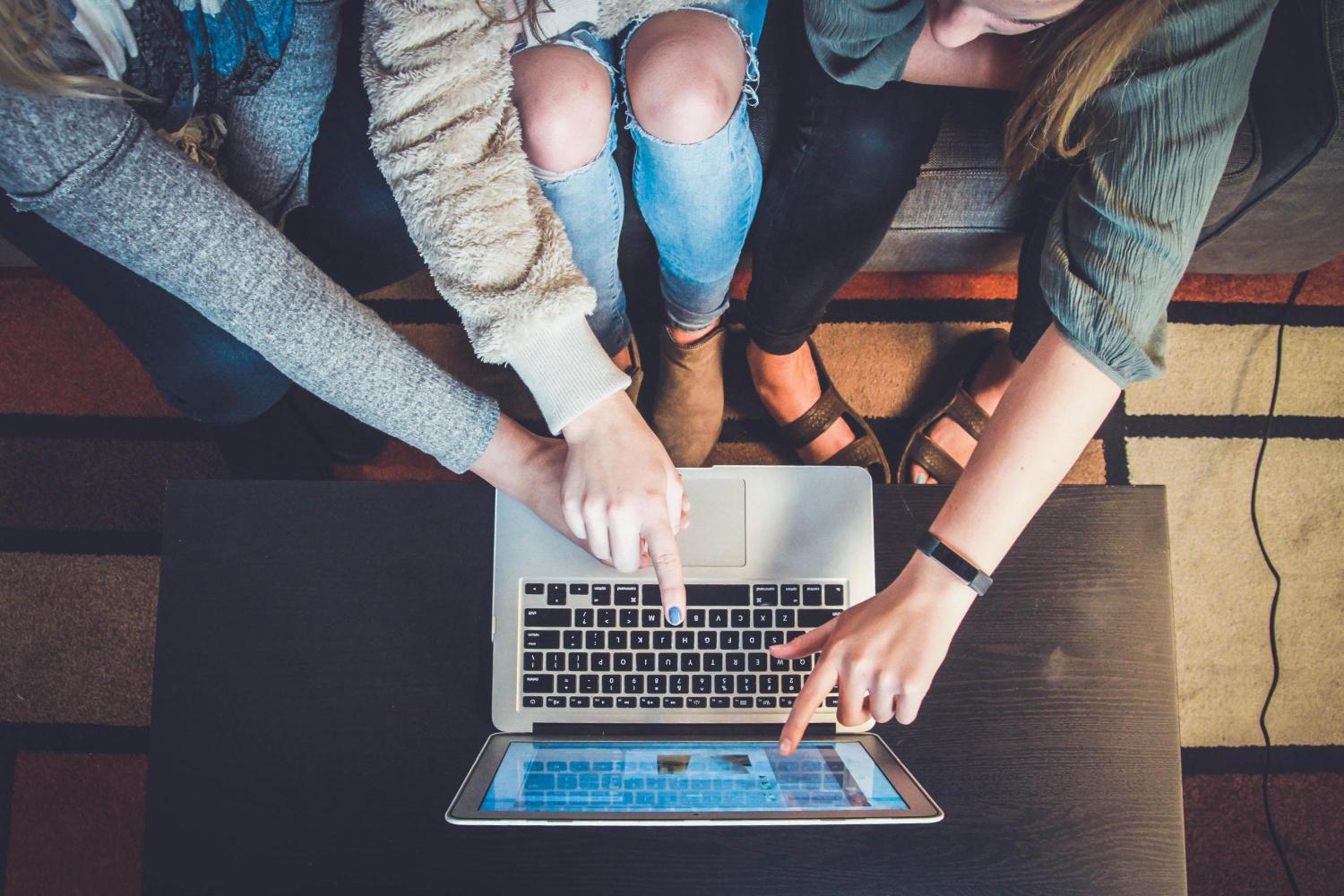
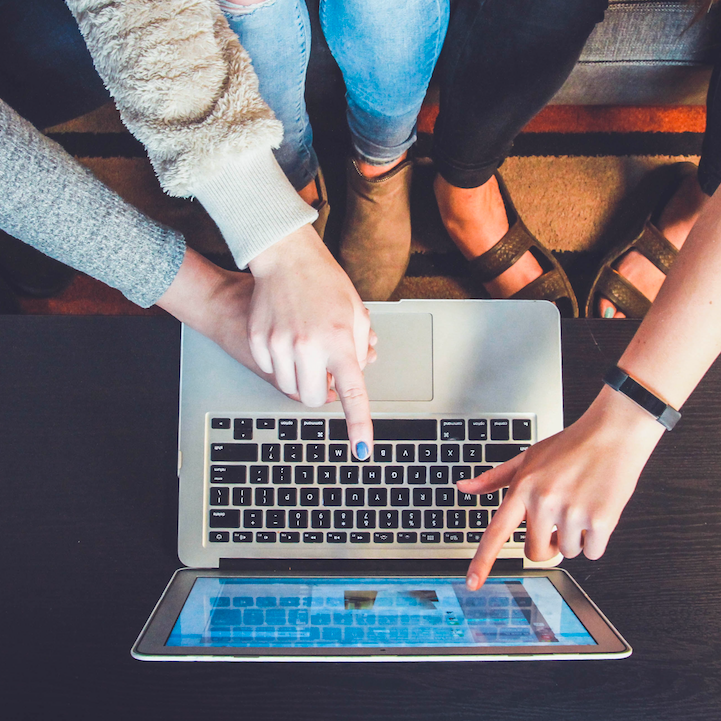
Last year, a major data privacy scandal gave rise to an “advertiser revolt” against Facebook. The outrage soon faded, but as Facebook encounters yet another wave of bad press, brands may once again begin to question their relationship with the ubiquitous social media platform.
Brands in revolt, temporarily
The roots of the data privacy issue are deep, but the immediate cause of the 2018 advertiser backlash was fairly straightforward.
In March 2018, reports surfaced that information on 50 million Facebook users was accessed without their knowledge during the 2016 election cycle. Behind the data harvesting was Cambridge Analytica, a firm involved with the 2016 Trump presidential campaign.
As the news broke, Unilever was among a number of leading companies to bring up the issue of consumer trust. CEO Keith Weed warned that trusted brands could not afford to be associated with social media platforms that fail to safeguard users’ privacy.
Facebook took steps to smooth the waters. In June 2018 it joined in the launch of the newly formed Global Alliance for Responsible Media, a collaborative effort between brands, ad agencies, and media platforms to address brand protection in the context of “harmful and misleading media environments.”
When boycotts work
Consumer boycotts are notoriously difficult to sustain, but they do have a chance of success when they involve a leading brand that already shows signs of decline. That appears to be the case with Facebook.
Facebook’s efforts at peacemaking may have reassured its advertisers, but users were not so easily pacified.
Last spring, The Verge reported that Facebook lost 15 million users in the past two years.
In addition, last Friday CBS News reported that Facebook has lost its slot in Interbrand’s list of Top 10 Best Brands, falling from #8 in 2017 to #14 this year.
Aside from the continuing challenge of attracting younger generations, CBS attributed Facebook's problems to the company’s record-setting $5 billing fine with the Federal Trade Commission over Cambridge Analytica’s access to user data.
In addition, Facebook’s ongoing attempts to build support among right-leaning politicians and pundits has motivated an organized backlash from the left.
Business-to-business boycotts can be somewhat more successful. That may also be in play, as controversy builds over Facebook’s attempt to launch the digital currency Libra.
The Libra project initially received substantial backing from the financial community, but leading supporter PayPal jumped ship after consumer watchdogs and members of Congress raised concerns. As of last week, several others — including the five founding members Visa, Mastercard, eBay, Stride and Mercado Pago — also dropped out.
Facebook cleans house…
Over and above these issues, Facebook has also had to deal with an ongoing problem that is built into its DNA: the deliberate use of social media to amplify and spread lies, half-truths, conspiracy theories and political propaganda, especially regarding the efforts of Russia and other countries to interfere in U.S. elections.
Earlier this month, the U.S. Senate released a major report on the issue and concluded that Russia used Facebook and other digital media to interfere with the 2016 election, an effort that is still ongoing.
As if on cue, last week Facebook announced that it had spotted and removed pages, groups, and accounts linked to “coordinated inauthentic behavior” attributed to Russia and Iran.
“We’re constantly working to detect and stop this type of activity because we don’t want our services to be used to manipulate people,” Facebook stated.
…but can’t sweep the fake news under the rug
Facebook left an important loophole in its announcement, though. The company emphasized that it is taking down the fake accounts “based on their behavior, not the content they posted.”
The “not the content” loophole, however, goes right to the heart of the matter.
In a high-profile speech at Georgetown University last week, Facebook co-founder and CEO Mark Zuckerberg reasserted the platform’s core responsibility to protect its users’ freedom of expression (here cited by The Hill):
“Whether you like Facebook or not, I think we need to recognize what is at stake and come together to stand for voice and free expression at this critical moment.”
That’s all well and good, but the U.S. Constitution protects against repression by the government. Private companies are under no constitutional obligation to maintain a hands-off position.
Where advertisers might draw the line
Be that as it may, the “not the content” loophole also extends to advertisers, as Zuckerberg emphasized in his Georgetown speech.
That position is going to be tough for Facebook to defend moving forward. Federal law requires broadcast networks to run political campaign advertisements regardless of content, but other platforms — including social media as well as cable television — are under no such obligation.
The federal no-censorship law also does not cover “issue advertisements” that are paid for by supporters outside of the candidate’s official campaign.
Facebook does have the option to exercise discretion over political advertising. It also has a framework for doing so. Like virtually all other media organizations, the company places a long list of specific restrictions on advertising content. The list includes content that is “disrespectful” as well as content that is false.
While Facebook may be getting its “fake news” problem under control, the company’s persistent defense of falsities in political advertising has already taken center stage in the runup to the 2020 election year.
The leak of audio from a recent Facebook employee internal town hall meeting also reinforces the perception that Facebook has picked sides in the 2020 election.
So far, companies that advertise on Facebook seem to have adopted a wait-and-see attitude. If the environment becomes too “harmful and misleading” during the 2020 election cycle, though, leading brands may decide to sit this one out.
Image credit: John Schnobrich/Unsplash
Syngenta Announces Plans to Help Farmers Tackle Climate Change


Syngenta, one of the world’s largest agriculture companies, announced at the Bloomberg Sustainable Business Summit in New York that it will spend $2 billion during the next five years to help farmers prepare for and tackle the increasing threats posed by climate change.
For Syngenta, climate action applies to its operations, too
The Switzerland-based company also announced it will work to reduce the carbon intensity of its operations by at least 50 percent by 2030 to support the goals of the Paris Agreement on climate change.
Citing recent floods in the United States, the drought in Australia, and the record-breaking summer temperatures in Europe, Erik Fyrwald, Syngenta's CEO, said during the Summit that climate change is putting enormous pressure on farmers worldwide.
“We know we have to help farmers,” Fyrwald said. “We need to identify what works. We also know we have to reduce the greenhouse gas emissions that come from agriculture to make agriculture part of the solution. This is not about altruism; this is about saving our planet.”
In yesterday’s announcement, the company said funding will go toward programs with clearly differentiated benefits or breakthrough technologies that “will enable a step change in agricultural sustainability.” Investments will be prioritized in areas such as integrated pest management, continuous living cover systems, multifunctional field margins, water-use efficiency and effectiveness, and integrated crop-livestock systems.
The company plans to report progress against its targets annually.
The investment supports Syngenta’s previously announced sustainability goal of delivering at least two technological breakthroughs to market each year to reduce agriculture’s contribution to climate change, harness its mitigation capacity, and help the food system stay within planetary boundaries.
Nature Conservancy continues its Syngenta partnership
During yesterday’s announcement, Syngenta said it will expand its decade-long collaboration with The Nature Conservancy (TNC) . The non-governmental organization will help Syngenta develop strategies and identify and test new innovations and technology funded under the new investment.
The partners announced several projects already in development including a project in the Chaco region of Argentina that will focus on maintaining biodiversity and resilient ecosystem, and a project in China to support the health and productivity of soil in arid potato-growing regions. Other projects will be conducted in Kenya, Brazil and the United States.
TNC will also provide independent validation of the Syngenta-funded projects, measuring CO2 reduction, water usage and land productivity measures.
“Achieving conservation at scale will require bold action from the private sector,” said Sally Jewell, CEO at TNC and former U.S. Secretary of the Interior under the Obama administration. “As businesses increasingly recognize the risks of climate change and the benefits of sustainability, we welcome the opportunity to contribute our science and expertise to help transform business practices.”
For Fyrwald, success is clear: “I won’t be satisfied with progress [against climate change] until we see CO2 levels drop significantly. Today, we are not there yet.”
Image credit: Christ De Wit/Unsplash
CECP Wants All Public Companies To Think Long-Term
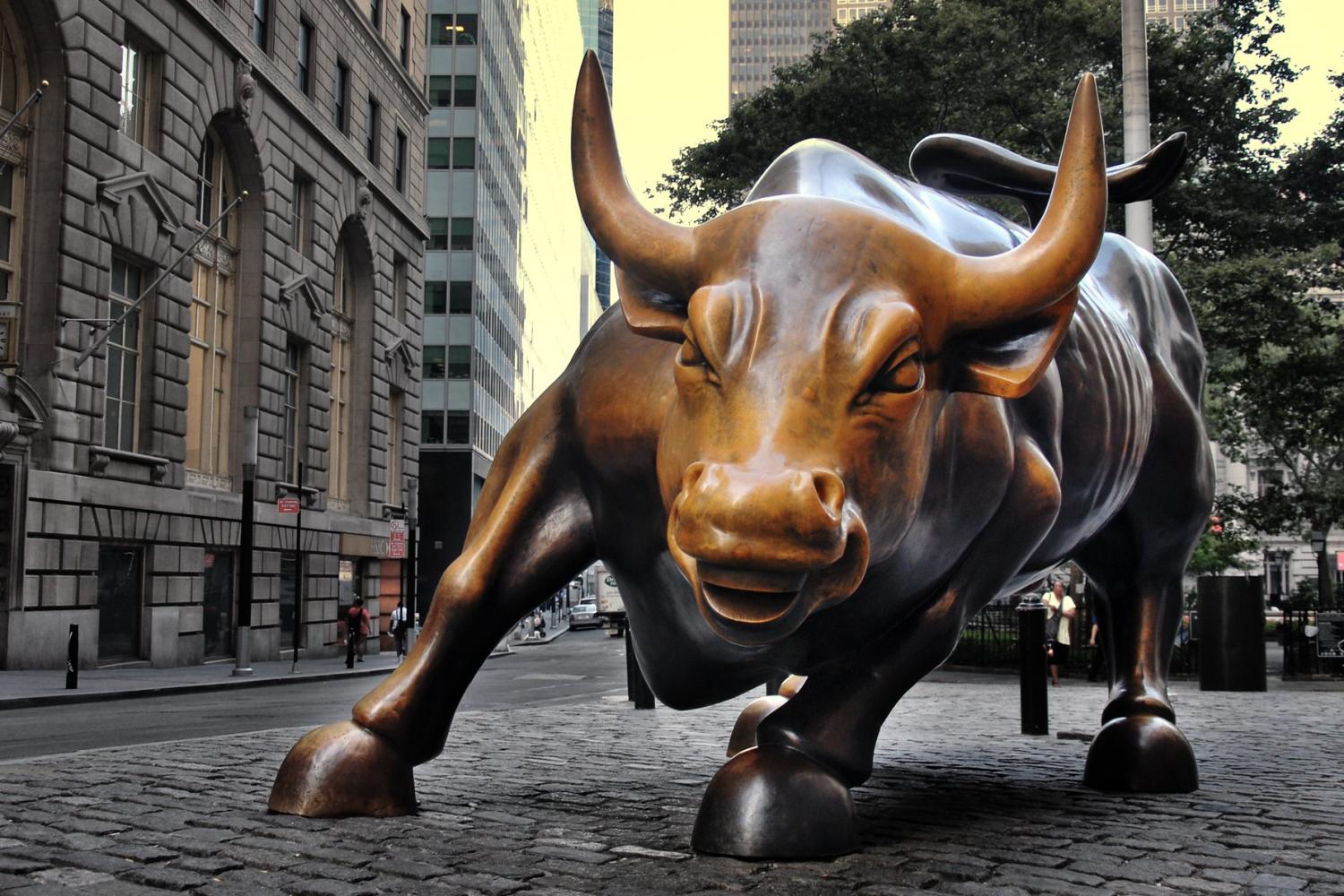
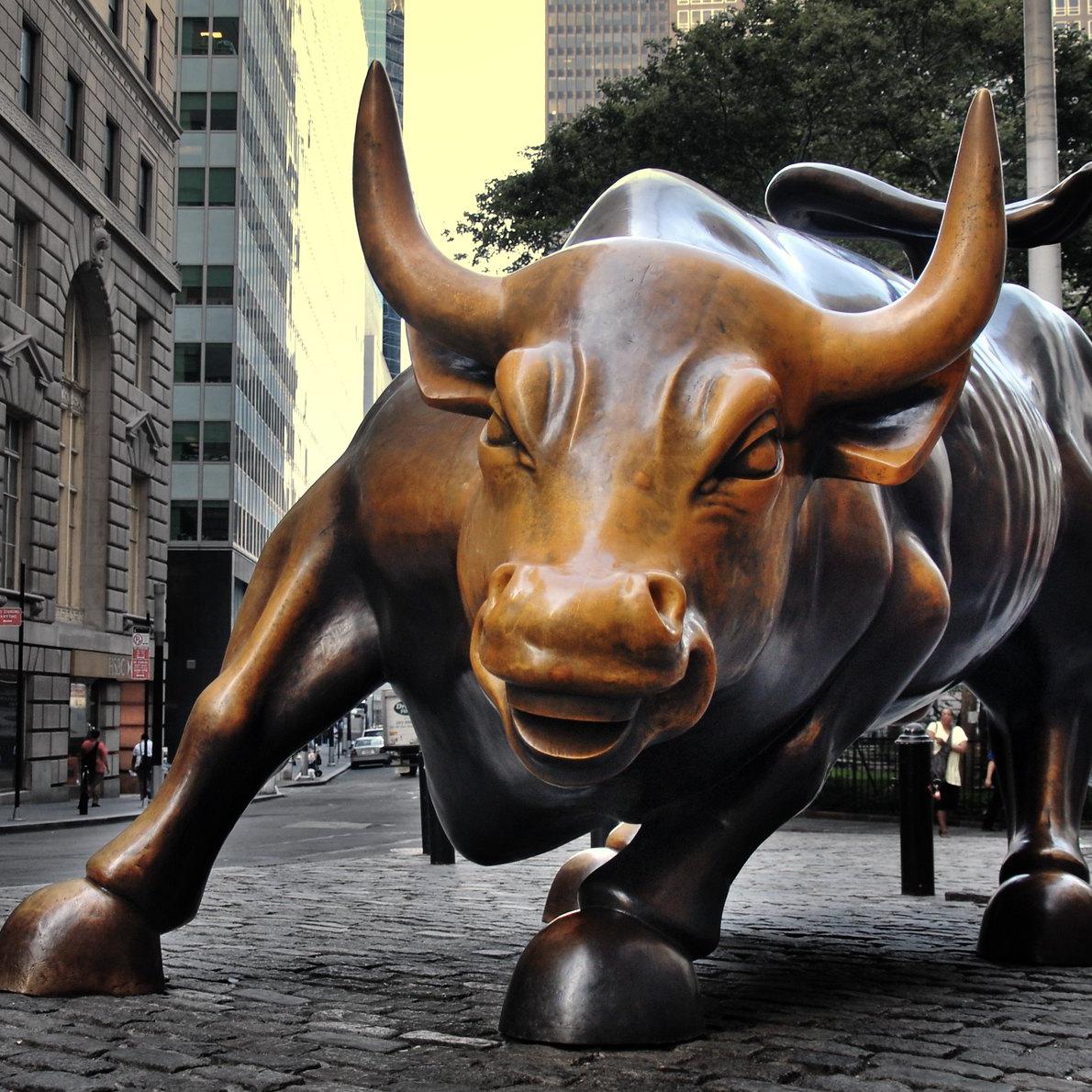
Economist Milton Friedman famously said the sole social responsibility of business is to maximize profits and shareholder returns. But this short-term, shareholder primacy perspective faces increasing public criticism—whether from influential executives like BlackRock CEO Larry Fink and Salesforce CEO Marc Benioff or coalitions like the Business Roundtable. Still, companies feel pressure from Wall Street to focus on short-term profits above all else.
Chief Executives for Corporate Purpose (CECP) is out to change that with a call-to-action for all public companies to commit to long-term business strategies by 2025 and engage more often with long-term oriented investors. “Our goal is to spark the movement of trillions of dollars in capital to companies that create value over the long term,” Nandika Madgavkar, senior director of CECP’s Strategic Investor Initiative, told TriplePundit.
The push for long-term thinking
The new pledge builds on years of work at the Strategic Investor Initiative, which includes engaging with companies and investors and compiling research about the benefits of long-term business planning.
“The power of the Strategic Investor Initiative is that is leveraging CECP’s longstanding network of CEOs and corporate responsibility departments to keep our fingers on the pulse,” Madgavkar said. “We understand what each of these groups is focused on and how trends shift.”
CECP created a proprietary template to guide companies through the process of creating what it calls Long-Term Plan presentations, which account for growth, strategy and risk, now and into the future.
“Most companies are already working on long-term business strategies,” Madgavkar said. “Creating a Long-Term Plan presentation is more about telling a cohesive story of what a company is doing across business units than it is about creating a new strategy.”
More than 30 CEOs of the world’s most prominent companies—representing 1 percent of U.S. listed companies and 6 percent of U.S. market capitalization—have presented their Long-Term Plans to investors at CECP’s CEO Investor Forums. “By lifting up these companies as examples, it demonstrates for those who are not yet convinced that there’s a movement happening,” Madgavkar said.
Further, CECP research indicates that Wall Street’s fixation on the short term may be fading: The public delivery of Long-Term Plans is associated with 1.83 percent higher market returns and 7.6 higher share turnover, according to a study the group published last year (PDF).
CECP is also looking to scale its platform so that more corporate leaders and investors have opportunities to communicate and assess companies’ Long-Term Plans. “By scaling, we’ll create a groundswell of demand for this information so that it becomes much more commonplace than it already is,” Madgavkar said.
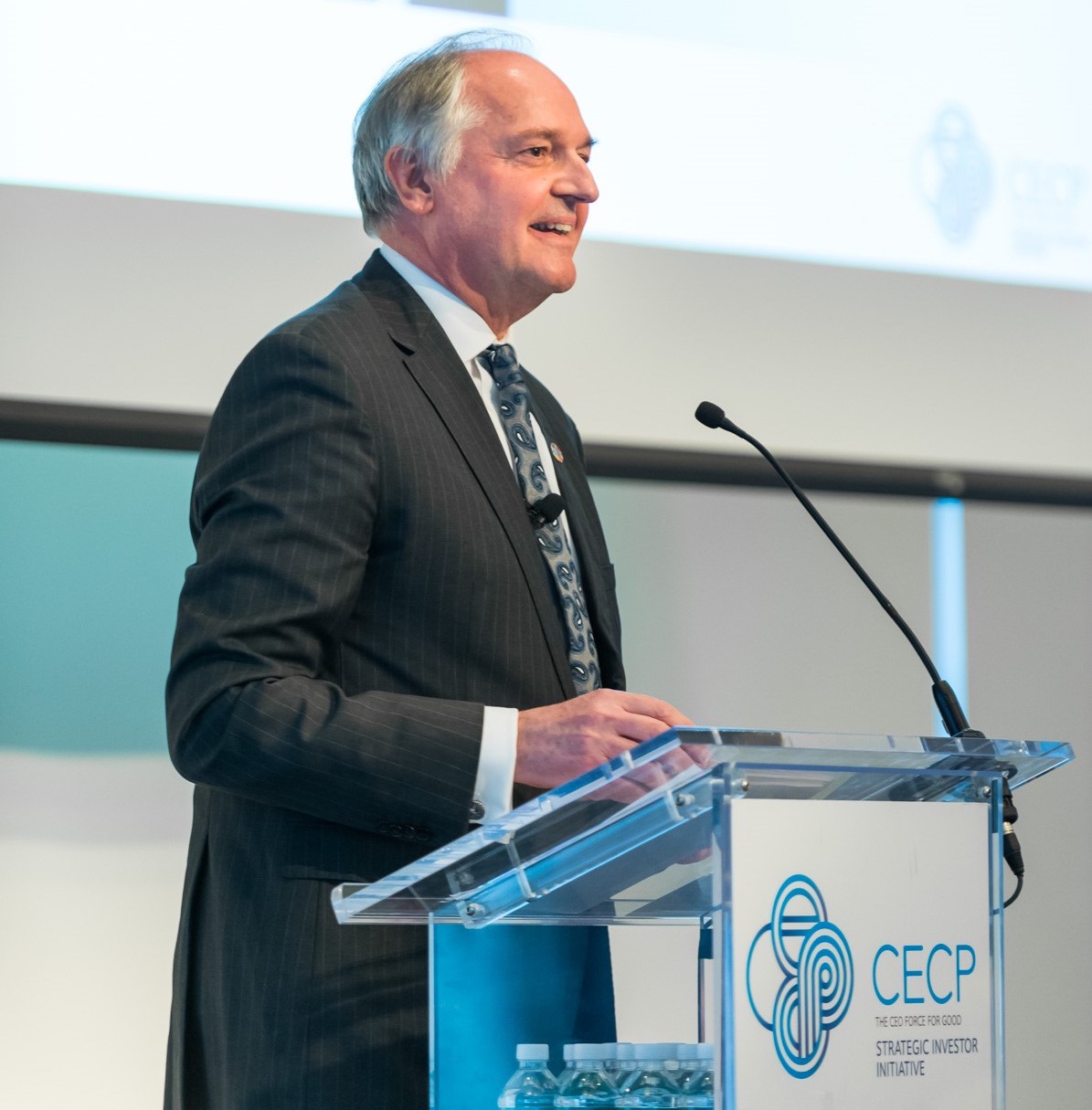
(Image: Former Unilever CEO Paul Polman spoke out against short-termism at a recent CECP Investor Forum, noting Unilever's preference for long-term value investors and saying, “A business cannot be a bystander in a system that gives it life in the first place." )
Breaking down silos to disrupt short-termism
For years, the perception among many corporate investor relations (IR) departments was that investors don't want to hear about sustainability. However, as we continue to see, investors do care about what companies are doing to ensure the long-term sustainability of their operations—and they're asking for more of this information, not less.
Case in point: More than 80 percent of mainstream investors now rely on sustainability or ESG (environmental, social and governance) disclosures to make decisions, according to a recent survey published in the Financial Analysts Journal.
Much of CECP’s work with companies focuses on breaking down silos between corporate departments such as IR, corporate social responsibility (CSR) and the C-suite, to make sure all have ownership over long-term strategies that account for impacts beyond profit.
“IR departments have changed their perspective on CSR,” Madgavkar explained. “As opposed to the way it was, say, 20 years ago, where CSR was seen as a ‘nice-to-have,’ but rather it is now an imperative for business to create value over the long-term for significant stakeholders, not just short-term returns for traders.”
Still, many IR departments are slow to catch up, but the process of creating compelling, publicly-facing stories about the future can begin to change the tide.
“While many forward-looking IR leaders recognize the value in telling their long-term story, there’s still more work to be done,” Madgavkar told us. “Companies have told us that one of the benefits in giving a Long-Term Plan presentation is that the preparation work breaks down these silos inside a company and shows how it all fits together—which may lead to improvements in the strategy. And leaders from across business units see how they can better work together to achieve common goals.”
The bottom line
The new pledge represents the culmination of CECP’s work in engaging companies and investors around long-term planning. Companies can fulfill their commitments to the pledge by engaging with CECP’s Strategic Investor Initiative, dedicating time on their earnings calls to talk about long-term strategy, or sharing a Long-Term Plan in their annual reports.
“Our coalition at the Strategic Investor Initiative believes this is what’s needed to bring long-termism to the next level,” Madgavkar concluded. “To truly make an impact, we need this to be the new normal for companies.”
Don’t forget: Later this month, we’ll be hosting 3BL Forum: Brands Taking Stands – What's Next, October 29-30, at MGM National Harbor, just outside Washington, D.C. Nandika Madgavkar of CECP will join an onstage discussion exploring how ESG must integrate all departments of a company, including investor relations, human resources and communications.
We're pleased to offer 3p readers a 25 percent discount on attending the Forum. Please register by going to the 3BL Forum website and use this discount code when prompted: NEWS2019BRANDS.
Image credits: Flickr/Sam Valadi, Flickr/CECP Photo and Pexels/Jonas Ferlin
Stanley Black & Decker Invests in the Future of Manufacturing with Maker Month
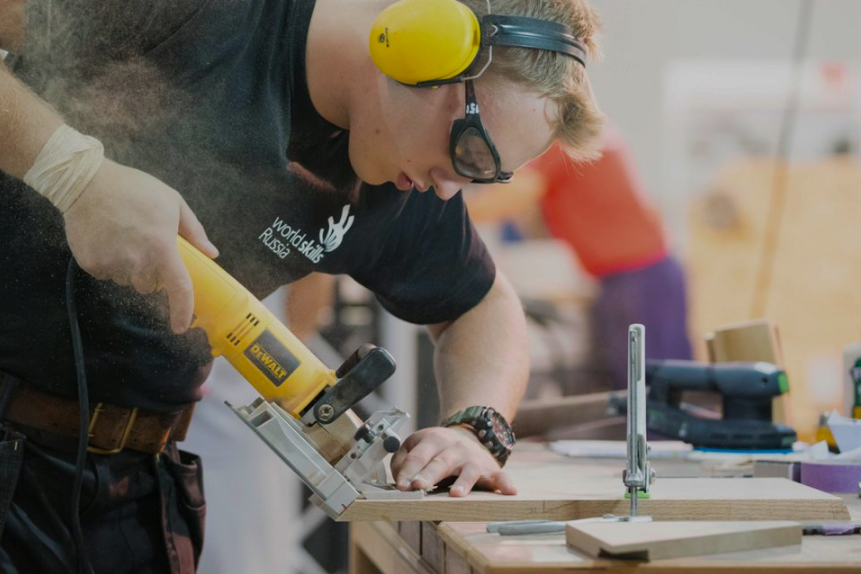
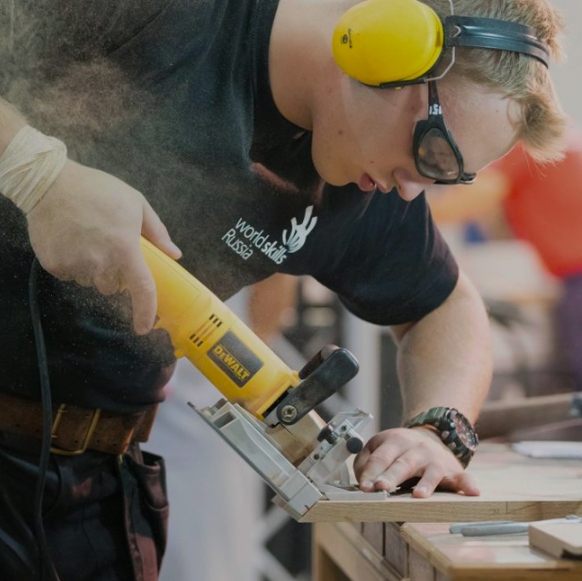
This October marks the second year of Stanley Black & Decker’s Maker Month, 31 days of various programs that invite students to explore creativity, design and connection. This year’s activities include an innovation challenge for grades 9-12 student teams, trade and vocational scholarships, and networking events for students to learn more about careers in manufacturing.
The Fortune 500 giant specializing in tools, household hardware and security products hopes these initiatives will engage 45,000 people in 2019 alone. By 2030, the company hopes to inspire 10 million “makers.” Why 10 million? That’s the number of manufacturing jobs that remain unfilled worldwide because of a lack of qualified workers.
“There is a skills gap that needs to be filled,” Abigail Dreher, director of public affairs at Stanley Black & Decker, told TriplePundit in an interview. “We want our employees to thrive, and we want the next generation to be able to excel as it comes into this field.”
Developing long-term relationships with makers
Plenty of companies donate money to schools and send representatives to career fairs - but the actions Stanley Black & Decker has been taking go far beyond such gestures.
The company reaches students in different age groups in distinct ways. For elementary and middle school students, it’s exposing them to the possibilities of manufacturing and technical careers. For high school and college-age students, the company connects via internships and apprenticeships. Finally, at the career-ready level, Stanley Black & Decker works to make sure employees have the necessary skills to adapt to new technology and programs.
One indication of the longer-term impact Stanley Black & Decker hopes to make can be found in the award for this year’s “Making for Good” challenge—part of the company’s Innovation Generation initiative, a collaboration with the curriculum developer Discovery Education.
Teams of two to four grades 9-12 students have until January 30, 2020 to submit proposals for product designs that achieve environmental or social good. The top three teams will receive cash prizes. Along with $15,000, the winning team will be offered a virtual mentorship with Stanley Black & Decker.
For students entering the next chapter of their learning, Stanley Black & Decker is also granting secondary or post-secondary scholarships. This year, it will award five students with $10,000. Individuals can submit applications from October 21 to November 15.
On a more casual and grassroots level were this October’s learning days. Across the globe, Stanley Black & Decker opened its facilities to tours and activities, conducted panel discussions, and even partnered with schools and organizations to lead Maker Month activities.
But Maker Month is bigger than October. Stanley Black & Decker says it is determined to continue the relationships it forges with students and schools through the years. In its first annual Maker Month in 2018, the company made a commitment to create maker spaces for two schools. The company is still working with those schools to build out those spaces to their needs and liking with the best tools and resources available, Dreher says.
The business case for investing in your workforce
When asked what business benefits the hardware company has seen from empowering makers, Dreher points to the company’s own workforce. Having a common rallying cry, she says, is powerful for not only empowering employees, but also attracting the best talent.
Developing a unified workforce is not as simple as it may sound. According to a 2017 Gallup report, only 33 percent of U.S. employees feel engaged at work. And a study led by The New York Times and the Harvard Business Review revealed that employees are more satisfied and productive when they feel their work has a higher purpose. That result carries across both white- and blue-collar industries and job functions.
For Stanley Black & Decker, its unifying purpose is “for those who make the world.” Dreher says employees are aware that “it’s not just about us—not about us creating the tools. It’s the next person who’s going to use that tool and that innovation, and what are they going to do with it? How can they change the world?”
The company’s values impel it not only to inspire its workforce, but also to educate. As part of its wholistic investments in manufacturing, Stanley Black & Decker makes sure its employees are taken care of.
“We want to make sure our employees who have been working here for 10, 20, 50 years can manage new technology, that they’re not displaced by the different programs that are coming in,” Dreher says. The company teaches workers through strategic employee pairings and also by partnering with local schools and community colleges to train employees on new technologies.
Closing the manufacturing skills gap
Deloitte’s most recent study on the manufacturing skills gap estimates a potential economic impact of $2.5 trillion due to unfilled manufacturing jobs in the next decade. The report identifies three factors influencing this shortage: the introduction of advanced technologies and automation, misperceptions about manufacturing jobs, and retiring baby boomers.
While boomers continue to retire, Stanley Black & Decker is training the next generation of innovators and makers. The company announced this month that it will partner with Autism Speaks to establish a community college program called NxtGen that trains those with autism for skilled-labor jobs in manufacturing.
Bigger than Stanley Black & Decker
In the end, Stanley Black & Decker’s higher aim is for Maker Month to become larger than the company itself, a grassroots movement where students, parents, teachers and schools rally behind what it means to be a maker, Dreher says.
The company’s corporate responsibility activities during Maker Month and beyond not only provide an example to others in the manufacturing sector for how they can make a difference in their own industry, but it also shows how purpose-driven leadership in any industry can empower a workforce for good.
Image credit: Stanley Black & Decker
This CEO’s Sustainable Business Crusade Elevates Call for a New Capitalism
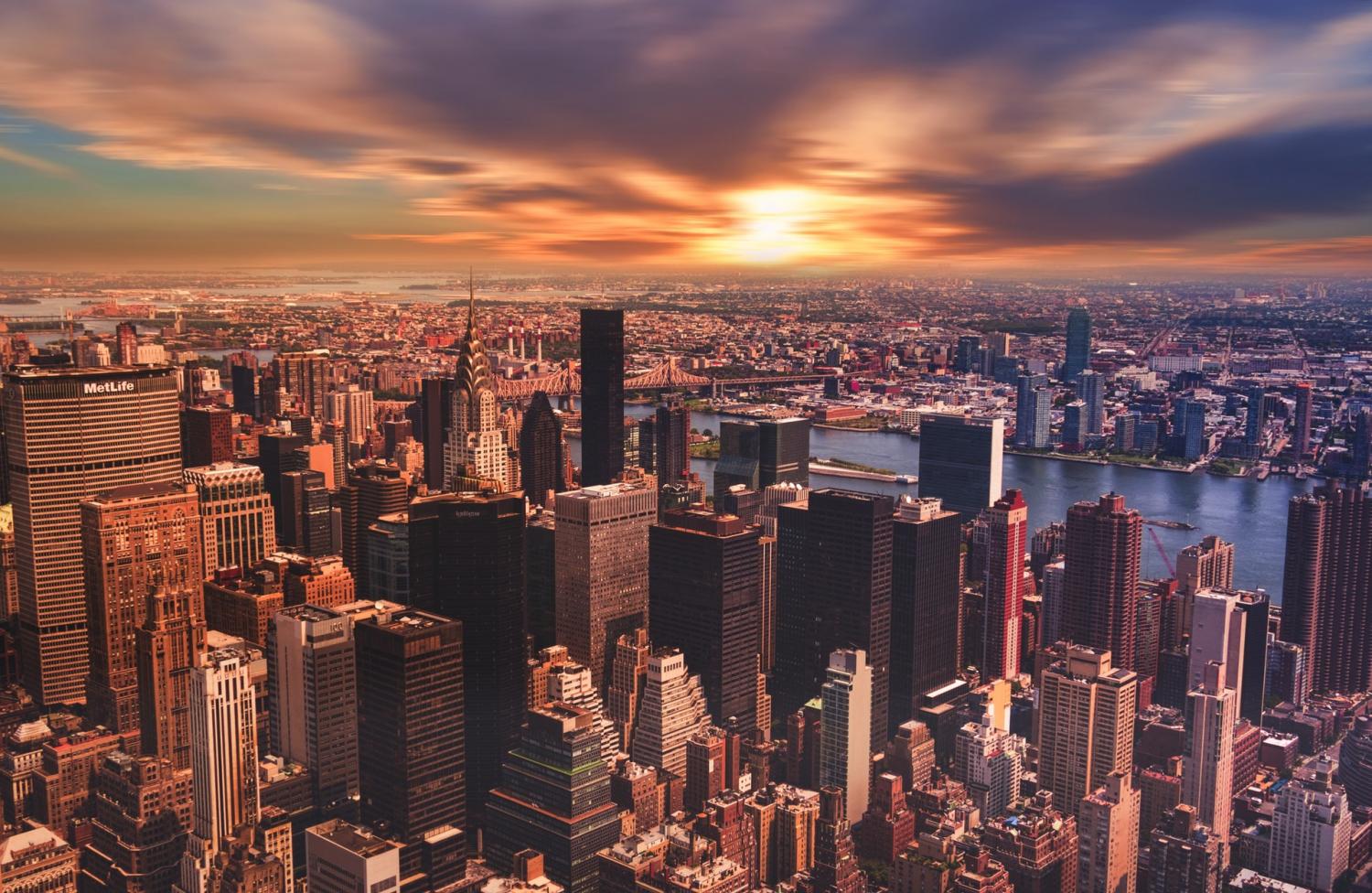
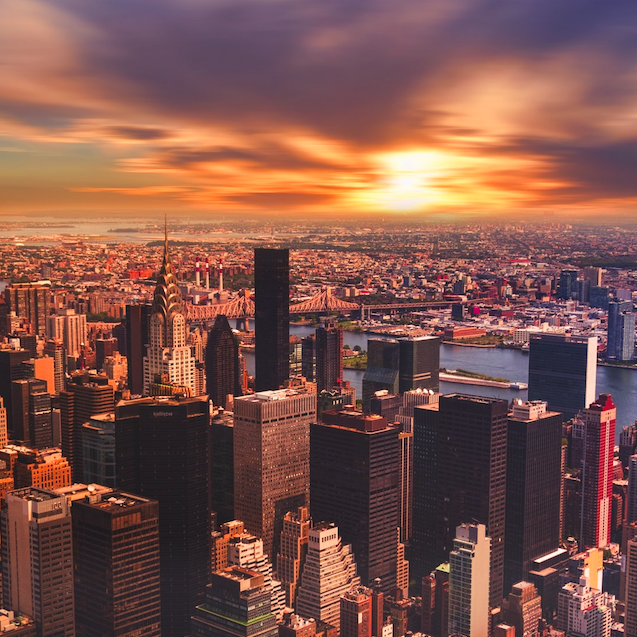
Sustainable business and social consciousness are becoming central to mainstream corporate discourse, and Salesforce CEO Marc Benioff has been a part of that conversation for years.
Benioff’s voice has turned into a fever pitch leading up to the release of his new book, Trailblazer, this past Tuesday. His traversal of the media circuit has led to some interesting discussions on the state of corporate America, such as his recent interview on Mad Money and op/ed in The New York Times. Offering a stark juxtaposition to traditional ideas of running a business, Benioff ventures to a conclusion that not many in his position are willing to reach: “Capitalism, as we know it, is dead.”
A rethink of capitalism
The New York Times piece portrays a man who understands that the system he is critiquing gave him his influence and wealth. But Benioff also recognizes that times are calling for a new iteration of capitalism, one that values stakeholders over shareholders, or at the very least values them equally. He joins other billionaires who are in favor of increasing taxes on America’s wealthiest citizens, with names such as Warren Buffett, Bill Gates, Tom Steyer and Bridgewater Associates founder Ray Dalio.
The calls for a more equitable version of capitalism have permeated the highest levels of American discourse, signified by Benioff in the business world and by individuals like Andrew Yang in politics.
Piggybacking on the Business Roundtable
In August, the Business Roundtable released a similar statement to Benioff’s echoing a firm commitment to a stakeholder-driven approach across the business world. The organization previously prioritized shareholder primacy—the idea that a company’s primary responsibility is to maximize shareholder profit—in its annual statements dating back to 1997. After 21 years, 181 CEOs came together to release a revised vision, one that calls for stakeholders, such as employees, customers and communities, to be valued in the calculus of decision-making. Signatories included Apple CEO Tim Cook and Amazon CEO Jeff Bezos.
In that statement, the Roundtable calls on companies invest in employees, which has proven to be a worthy use of capital; support the communities in which they work, which has been a hot topic in recent years with the Amazon headquarters debate; and also to deal with suppliers ethically. All of this in addition to traditional concerns centered around providing value to customers and shareholders.
A clarion call for sustainable business
Marc Benioff and other high-level executives are leading the charge to reorient capitalism, and those calls for more responsible and sustainable business will only continue. Recognizing that organizations are part of a broader ecosystem is necessary for that organization to not only thrive, but to survive. At any scale of business, whether it be a small store or a billion-dollar enterprise, expectations are evolving. Just ask Facebook, which Benioff has publicly called to be broken up. Scale doesn’t shield any organization from these changing expectations.
In the past, executives had no incentive to change, and the income inequality that has proven to be a foundational problem of our time emerged. Now, incentives have changed, and with them the outlook of organizations.
Investments in communities and in employees are no longer sunk cost. They are vital investments in maintaining the world in which companies exist. Not only that, but turning an organization toward a more equitable orientation can be the greatest problem-solver we have. That’s reason enough for any organization to assess its societal impact.
Image credit: Quintin Gellar/Pexels